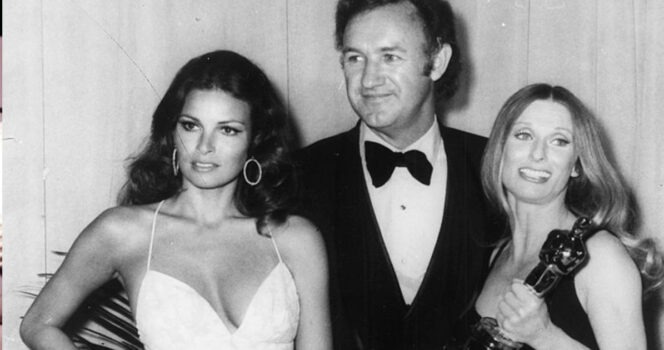The 44th Academy Awards, held in 1972, remains one of the most memorable nights in Hollywood history. Often described as a snapshot of a changing film industry, the event brought together iconic stars from cinema’s golden age and rising talents who would soon redefine the art of storytelling.
A Year of Groundbreaking Films
The evening was marked by a celebration of some of cinema’s most enduring masterpieces. The French Connection dominated the night, winning five Academy Awards, including Best Picture, Best Director (William Friedkin), and Best Actor for Gene Hackman. Hackman’s portrayal of the determined New York detective Jimmy “Popeye” Doyle set a new standard for realism in film acting.
“I’d never shot that much outside, especially in those conditions,” Hackman later said of the film. “It really pushed me as an actor.”
Also nominated that year was A Clockwork Orange, Stanley Kubrick’s bold and thought-provoking film that sparked much discussion. Other notable nominees included Fiddler on the Roof, which rekindled public appreciation for the musical genre, and The Last Picture Show, which received eight nominations and earned wins for Cloris Leachman and Ben Johnson in supporting roles.
The Fashion of Elegance

The 1972 Oscars brought back a refined, classic sense of style. The red carpet was a display of timeless glamour, with stars donning elegant brocades, chiffon gowns, diamonds, and sophisticated evening wear. Notably, Jane Fonda stood out in a stylish pantsuit, signaling a shift in red carpet trends while maintaining a dignified presence.
Gone were the fringe and bohemian touches of previous years. This was a return to a more polished Hollywood image.
A Night of Historic Performances

Music played a defining role that evening. Isaac Hayes made history by becoming the first African American to win an Oscar for Best Original Song with his dynamic “Theme from Shaft.” His live performance was a highlight of the ceremony—an unforgettable moment that captured the energy and spirit of the era.
Betty Grable’s Final Bow

Legendary screen star Betty Grable made one of her final public appearances at the 1972 Academy Awards. Remembered not only for her iconic WWII-era pin-up but also for her impressive film career, Grable arrived in a dazzling turquoise gown. She passed away the following year, making her presence at this ceremony all the more poignant.
The Return of Charlie Chaplin

Perhaps the most emotional moment of the evening came when Charlie Chaplin, then 82, was welcomed back to the United States after years of absence. Accused of political sympathies during the McCarthy era, Chaplin had not appeared in Hollywood since the early 1950s.
As he stepped onto the stage to accept an honorary Oscar, he was met with a 12-minute standing ovation—the longest in Academy Awards history.
“This is an emotional moment for me,” Chaplin said softly. “Words are so feeble. Thank you for the honor.”
New Faces, Lasting Impact

The ceremony also marked a symbolic passing of the torch. Hollywood greats like Jane Powell and Jane Russell mingled with emerging icons including Jack Nicholson, Jane Fonda, and Raquel Welch. A particularly striking image from the event captured Welch, Hackman, and Leachman together—representing the blend of tradition and change that defined the 1972 Oscars.
A Legacy of Grace and Innovation

The 44th Academy Awards stands as a tribute to both the glamour of classic Hollywood and the evolution of modern cinema. From groundbreaking films and heartfelt performances to emotional tributes and dignified fashion, it was a night filled with meaning.
More than 50 years later, the spirit of that ceremony continues to inspire movie lovers around the world.
Sources:
-
Getty Images
-
Academy of Motion Picture Arts and Sciences
-
Interviews archived via The Hollywood Reporter and The New York Times

